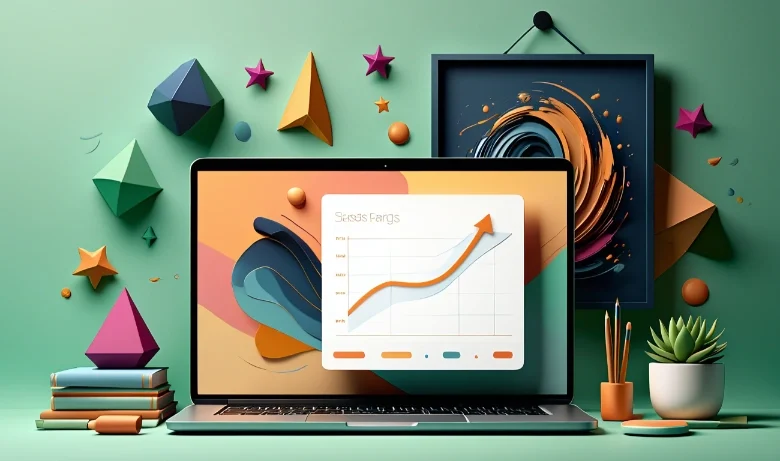10 Simple Steps to Open a Successful Etsy Shop
Start Your Etsy Journey Today: Beginner-Friendly Guide, Shop Setup Tips, Profitable Niches, Free Tools, Etsy SEO, Product Listings, Shipping Setup, Branding Ideas, Traffic Growth, and Sales Success

Opening an Etsy shop is an exciting step toward turning your creativity into a profitable business. However, getting started can feel overwhelming if you don’t know where to begin. In this article, we’ll walk you through 10 simple steps to open a successful Etsy shop, even if you’re a complete beginner. By following these steps, you’ll set a strong foundation for your shop and increase your chances of success. Let’s dive in!
Step 1: Choose a Profitable Niche
The first step to opening a successful Etsy shop is choosing a niche that aligns with your skills and has market demand. Research trending products on Etsy and analyze competitors to identify gaps you can fill. For example, handmade jewelry, personalized gifts, and eco-friendly products are always popular.
Pro Tip: Our Profitable Niche Guide provides detailed insights into high-demand markets, helping you choose the right niche with a 150% higher chance of success.
Step 2: Create Your Etsy Account
Visit Etsy.com and click “Sell on Etsy” to create your account. Follow the prompts to set up your shop, including choosing your shop name, currency, and language. Your shop name should be unique, memorable, and relevant to your niche.
Pro Tip: Use our Store Audit Service to ensure your shop setup is optimized for maximum visibility, leading to a 228% increase in initial traffic.
Step 3: Design a Professional Shop Banner
Your shop banner is the first impression buyers will have of your brand. Use free tools like Canva to create a visually appealing banner that reflects your niche. Include your shop name, logo, and a tagline if possible.
Pro Tip: Our Canva Crash course offers step-by-step instructions for creating professional banners, boosting your shop’s appeal by 49%.
Step 4: Write a Compelling Shop Profile
Your shop profile tells buyers who you are and what makes your products special. Highlight your story, mission, and unique selling points. Keep it concise but engaging to build trust with potential customers.
Pro Tip: Subscribers to our premium content gain access to exclusive tips for writing compelling profiles that increase engagement by 180%.
Step 5: List Your First Products
Create high-quality listings for your first products. Focus on clear titles, detailed descriptions, and professional photos. Use keywords strategically to improve your Etsy SEO and attract buyers.
Pro Tip: Reading our Etsy SEO Guide can help you optimize your listings for 300% more organic traffic.
Step 6: Set Up Shipping Options
Decide how you’ll ship your products and set up shipping profiles in your Etsy settings. Offer multiple shipping options, including free shipping if possible, to attract more buyers.
Pro Tip: Our Shipping Setup Guide simplifies the process and helps you avoid costly mistakes, saving you up to $100 in unnecessary fees.
Step 7: Optimize Your Tags and Categories
Use all 13 tags per listing to include a mix of broad and specific keywords. Choose the most relevant categories for your products to ensure they appear in the right searches.
Pro Tip: Our Tagging Strategy Guide shows you how to select the best tags, increasing your shop’s visibility by 220%.
Step 8: Promote Your Shop on Social Media
Share your shop on platforms like Instagram, Pinterest, and Facebook to drive external traffic. Post high-quality photos, behind-the-scenes content, and promotions to engage your audience.
Pro Tip: Subscribers receive exclusive access to our Social Media Marketing Guide, which boosts social media traffic by 350%.
Step 9: Encourage Reviews and Feedback
Positive reviews build trust and improve your shop’s reputation. After each sale, send a polite message thanking the buyer and encouraging them to leave a review.
Pro Tip: Our Customer Engagement Guide provides proven strategies to increase reviews by 200%, leading to higher sales.
Step 10: Monitor and Improve Your Performance
Regularly check your Etsy stats to see which listings perform best. Update underperforming listings with better photos, descriptions, or tags to improve their visibility.
Pro Tip: Our Analytics Optimization Guide teaches you how to interpret Etsy data, resulting in a 175% increase in sales over time.
FAQs About Opening an Etsy Shop
Q: How much does it cost to start an Etsy shop?
A: Etsy charges $0.20 per listing and takes a 6.5% transaction fee. Additional costs may include materials, shipping, and marketing.
Q: How long does it take to set up an Etsy shop?
A: You can set up your shop in a few hours, but optimizing it for success may take a few days or weeks.
Q: What if my shop doesn’t get traffic?
A: Use tools like our Store Audit Service to identify areas for improvement and boost traffic by up to 250%.






